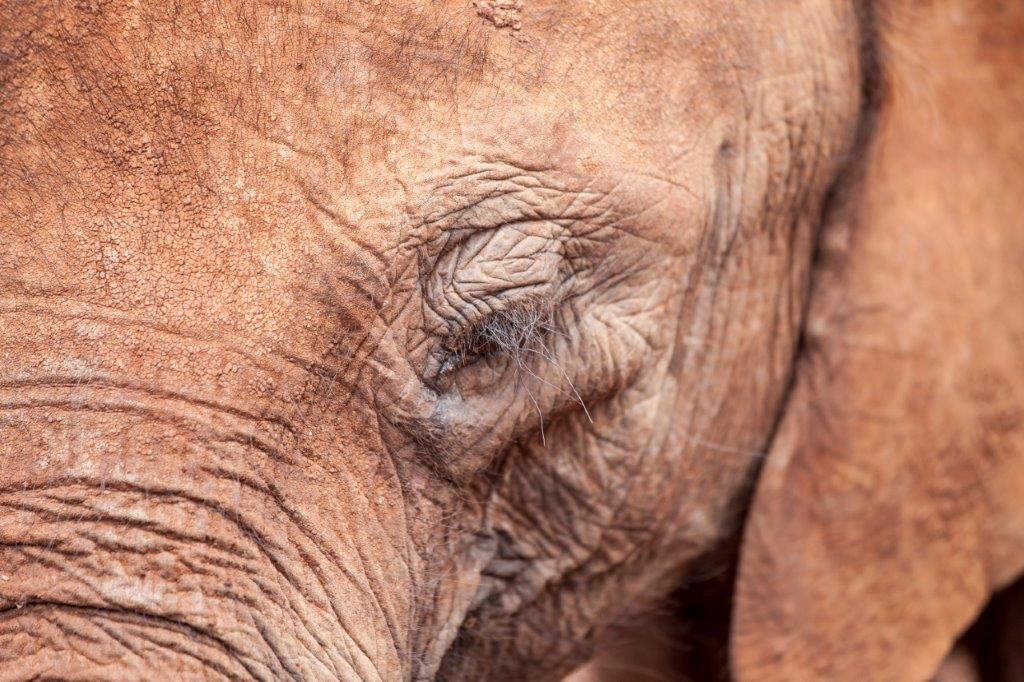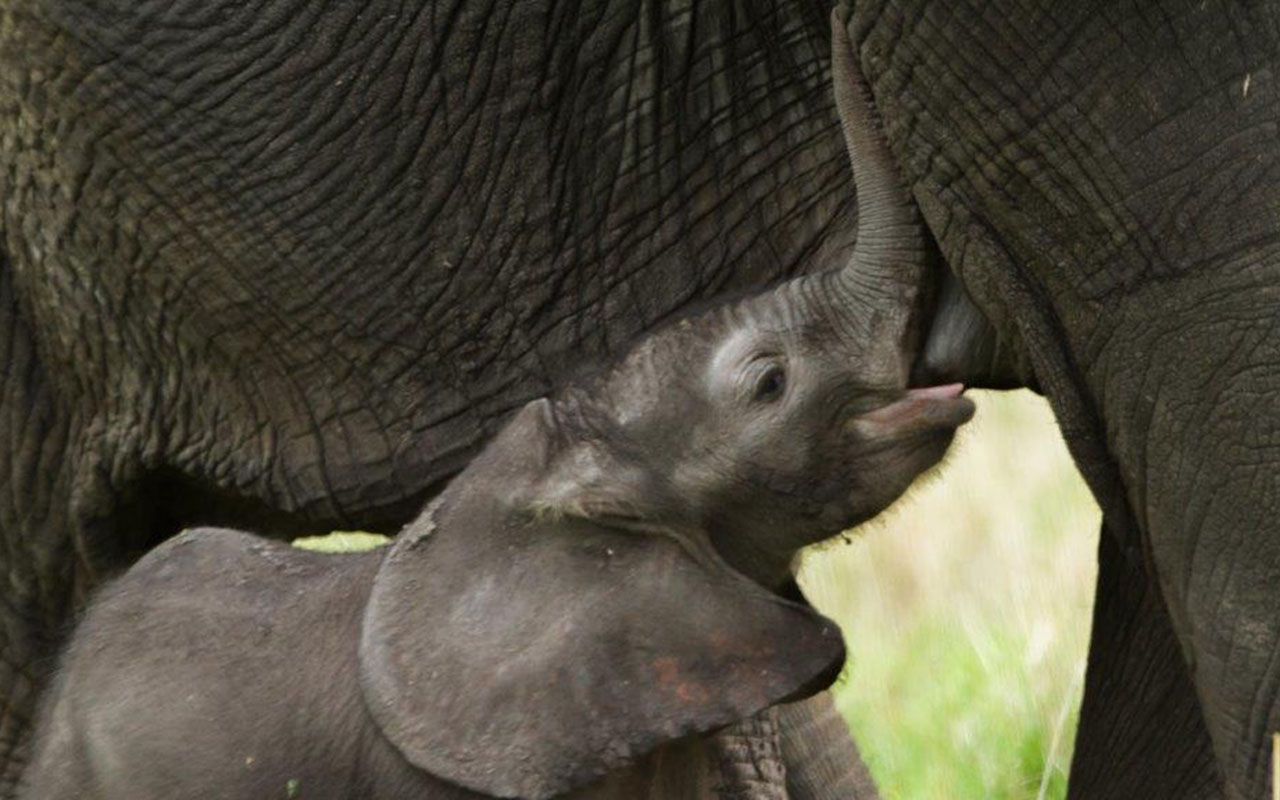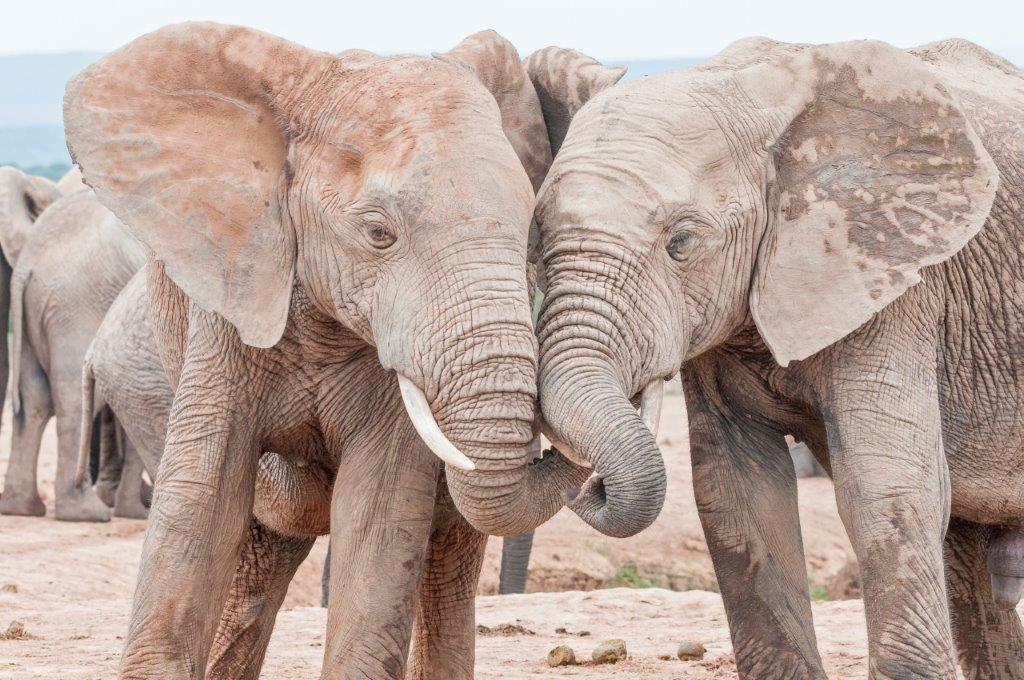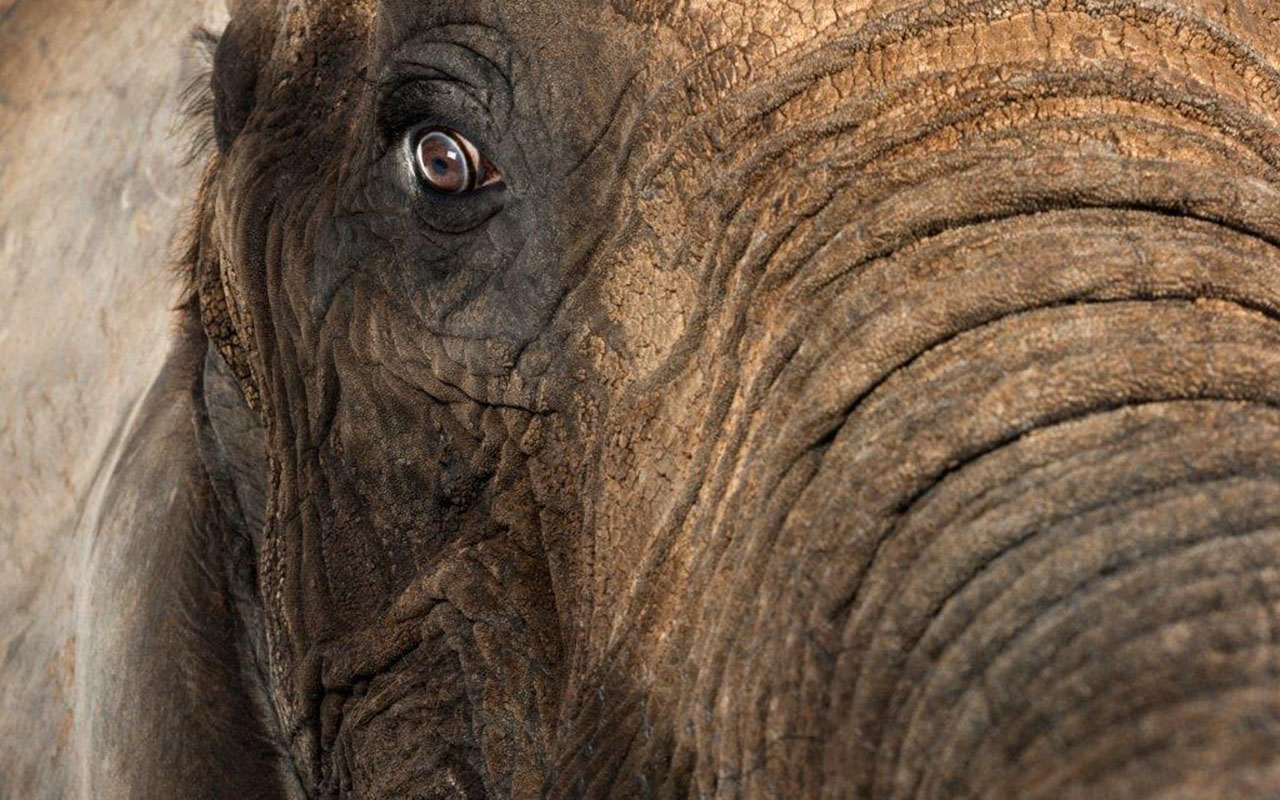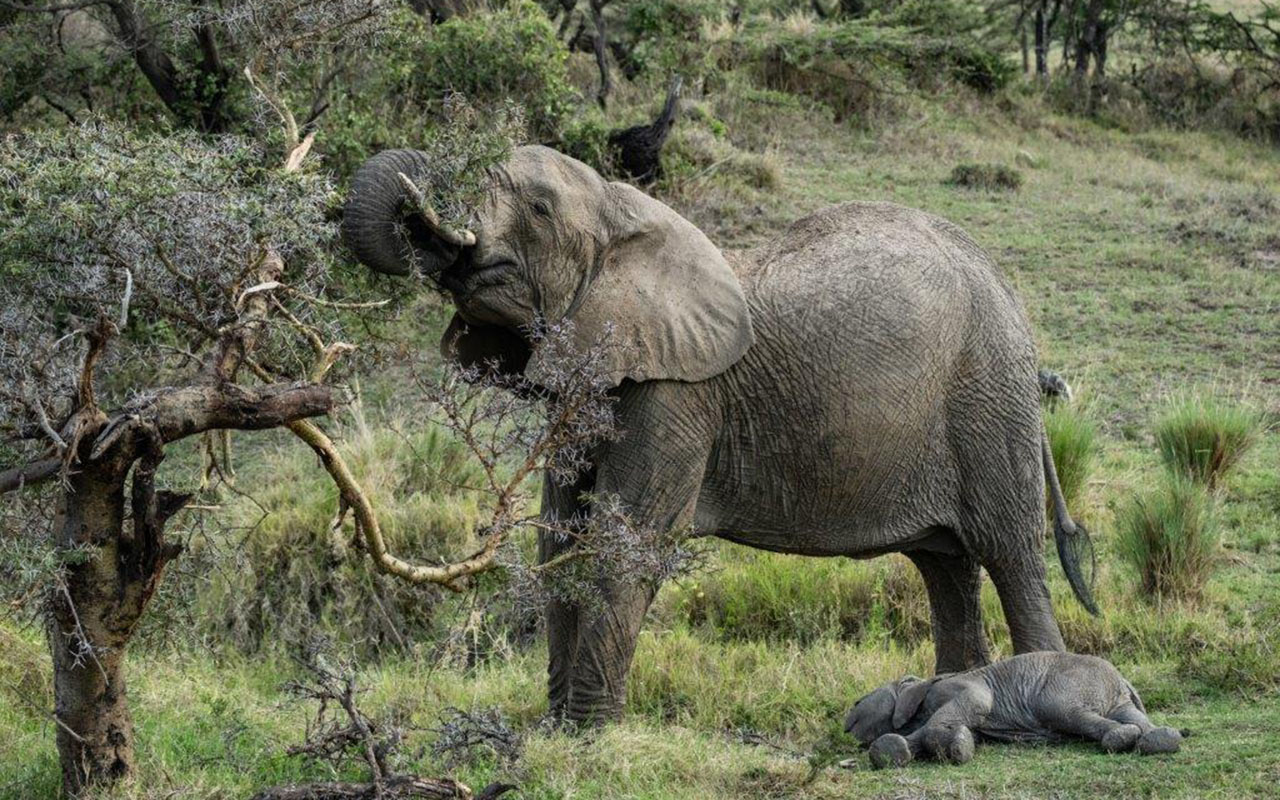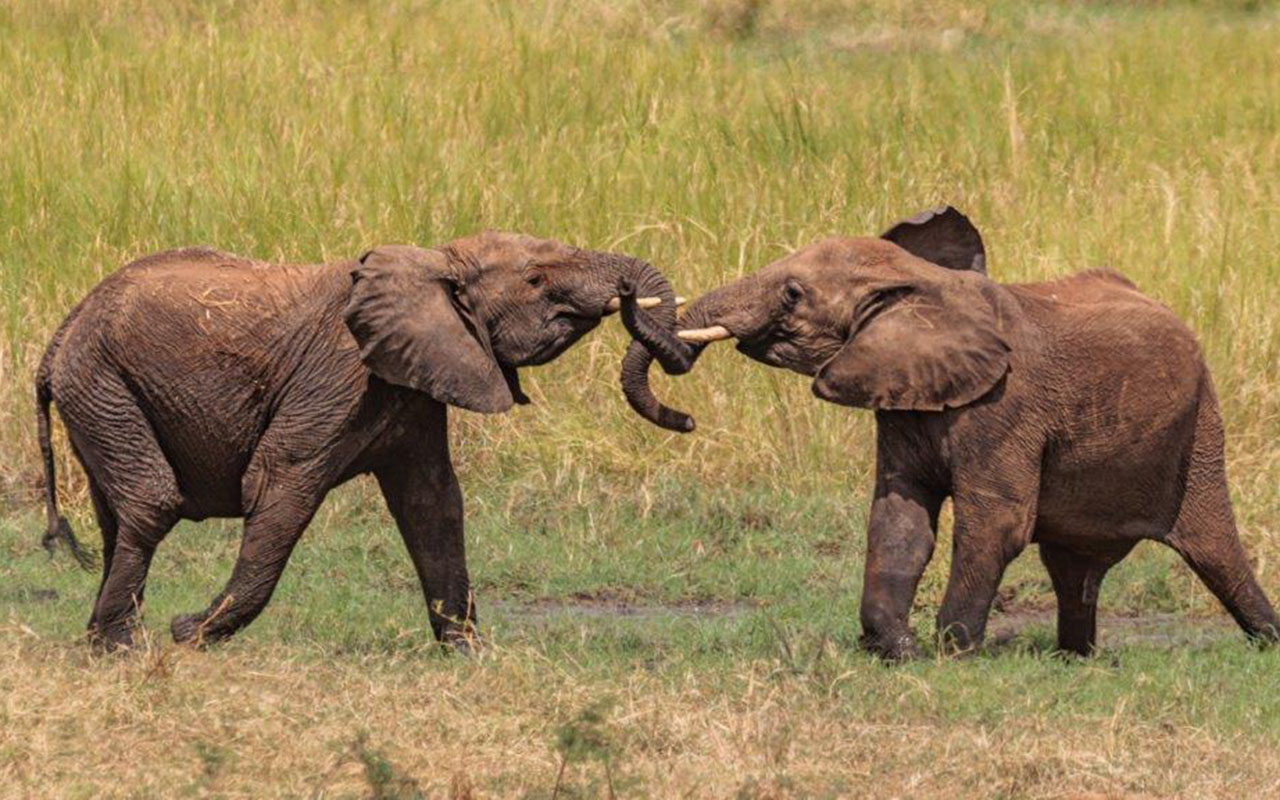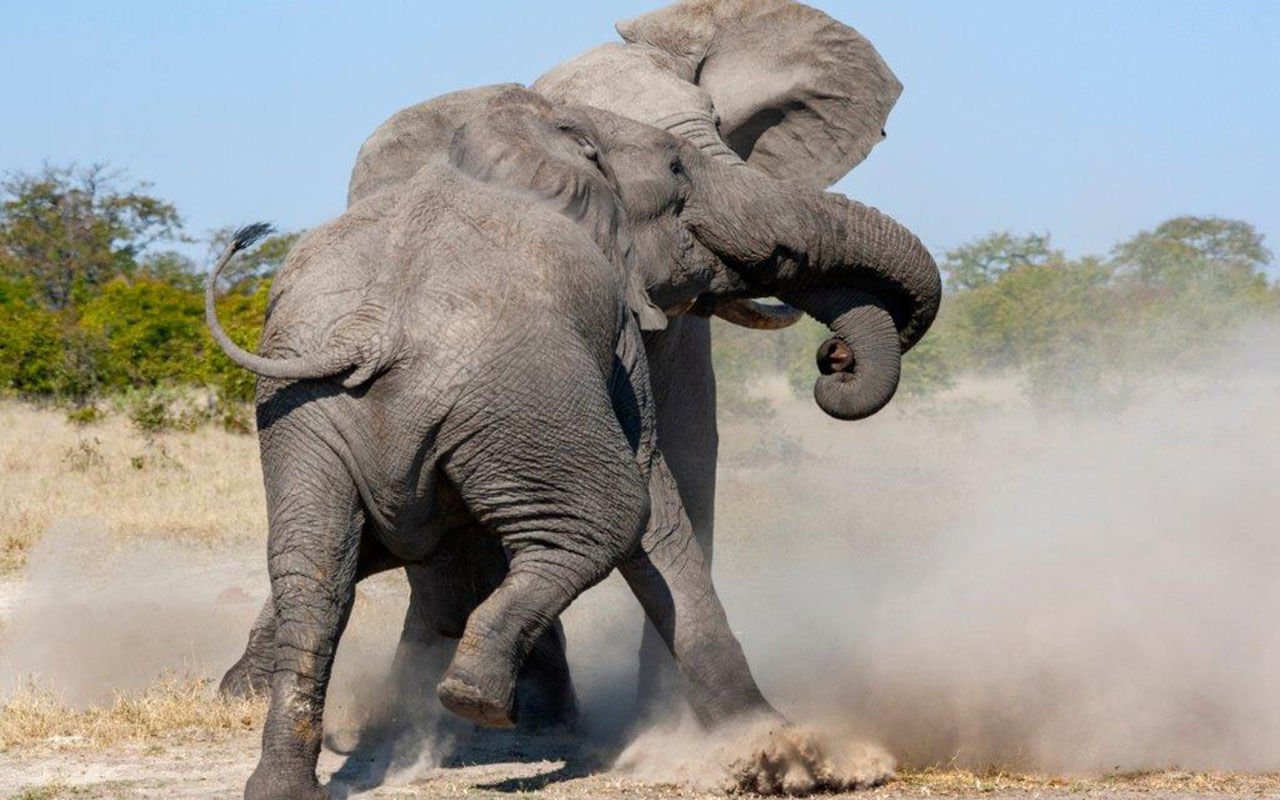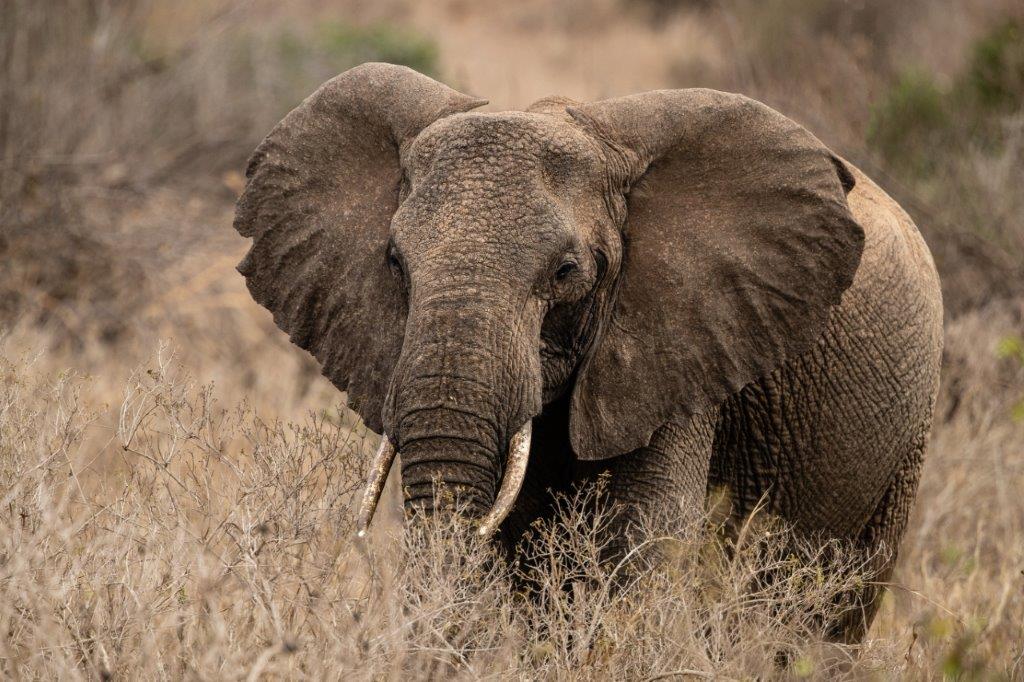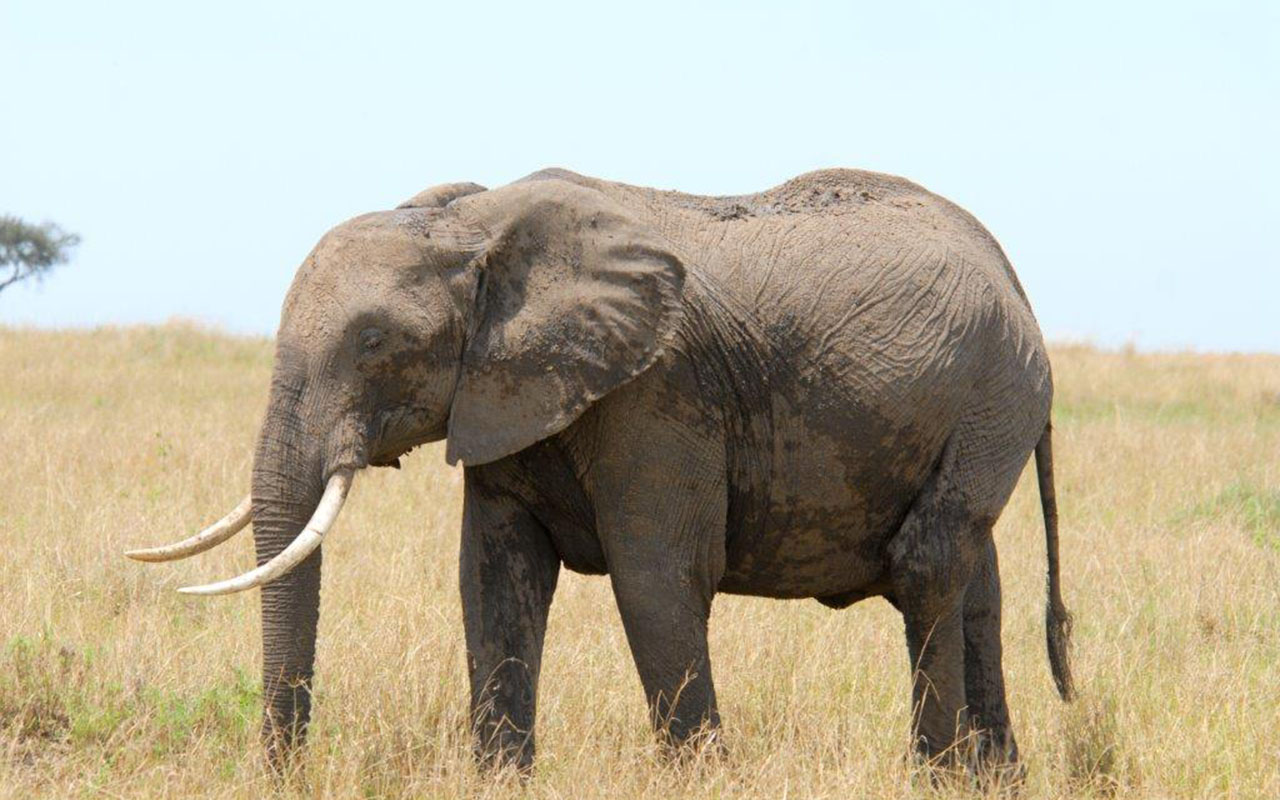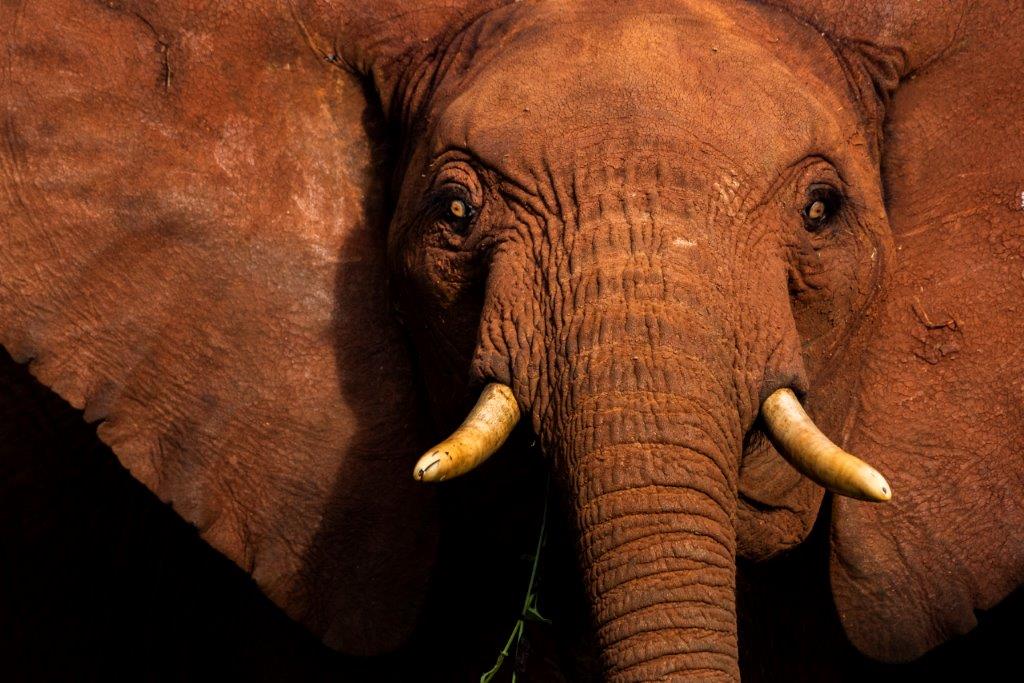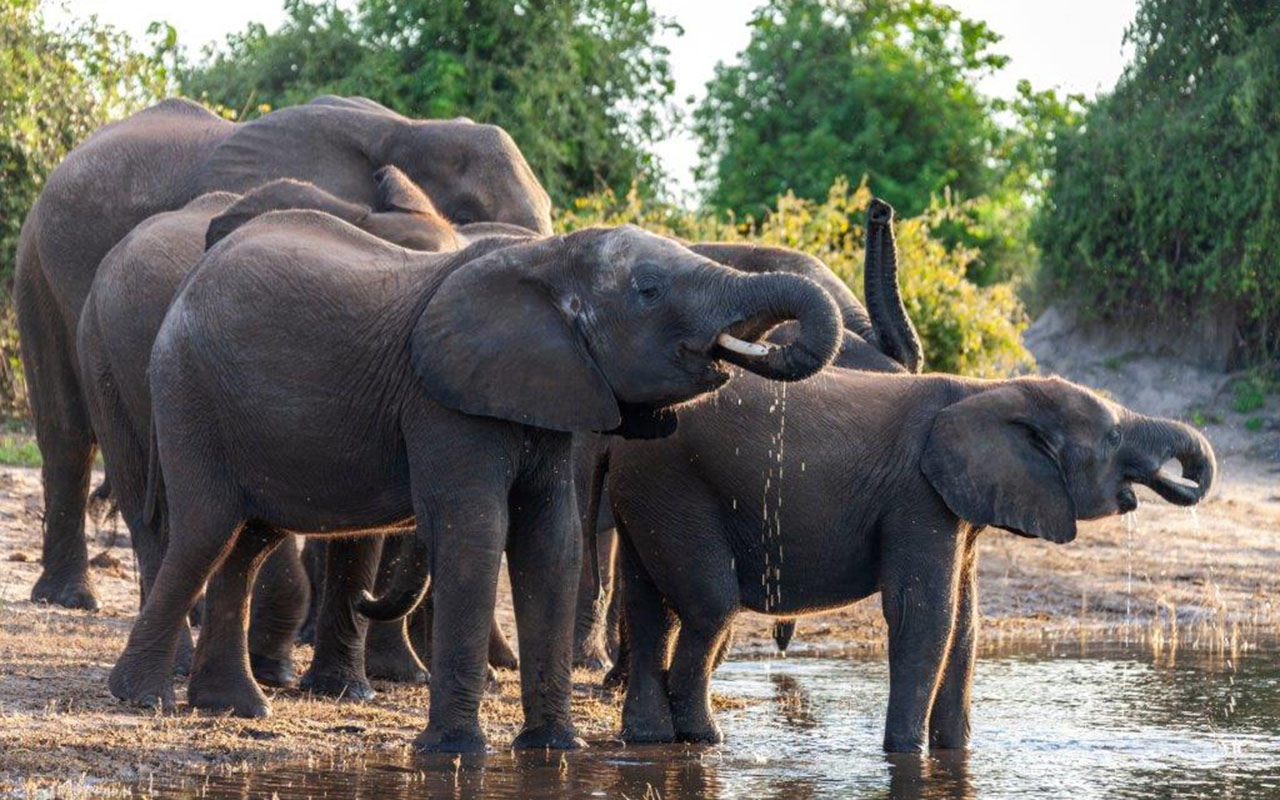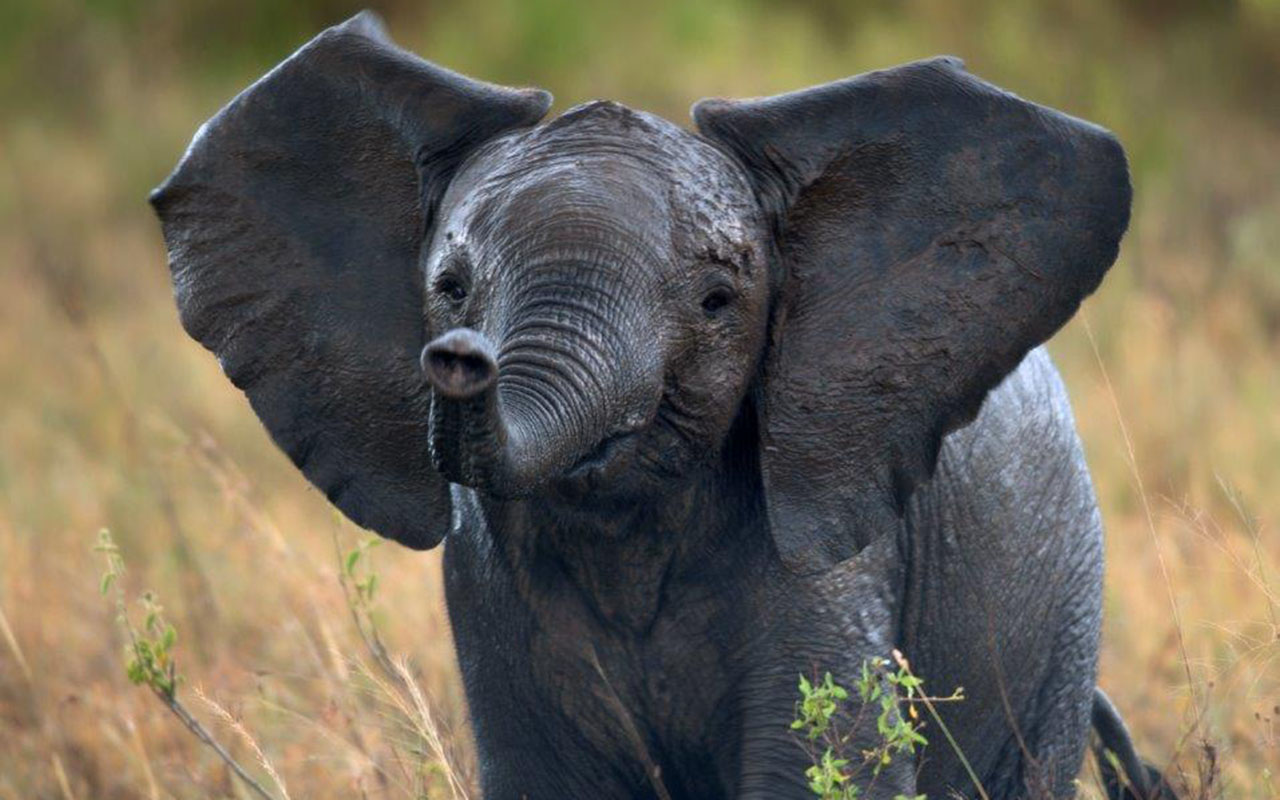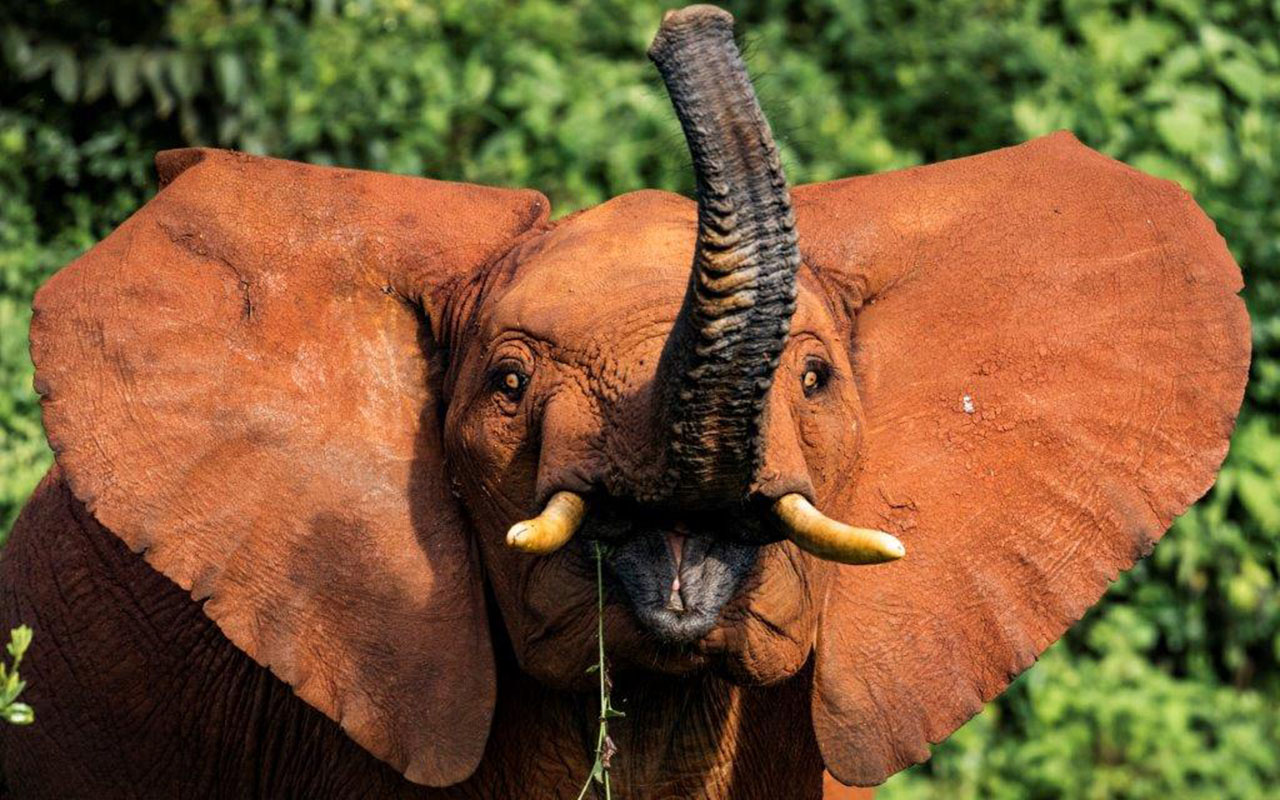Elephant
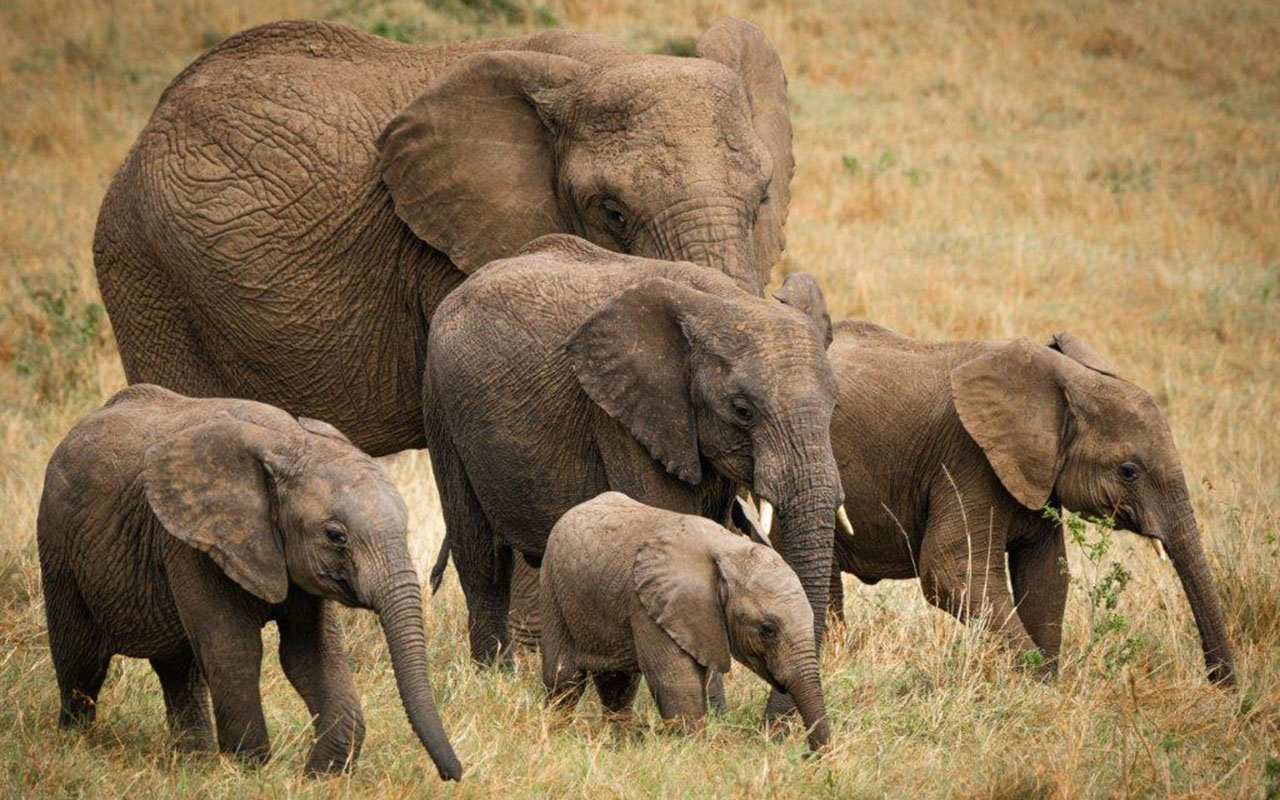
| Kingdom -> | Animalia |
| Phylum -> | Chordata |
| Class -> | Mammalia |
| Order -> | Proboscidea |
| Family -> | Elephantidae |
| Genus -> | Loxodonta |
| Species -> | L. Loxodonta africana |
African Bush Elephant (Loxodonta africana)
The African bush elephant, also known as the African savanna elephant, is one of two extant African elephant species and one of three extant elephant species. It is the largest living terrestrial animal, with bulls reaching a shoulder height of up to 3.96 m (13 ft 0 in) and a body mass of up to 10.4 t (11.5 short tons). It is distributed across 37 African countries and inhabits various environments including forests, grasslands, woodlands, wetlands, and agricultural land. Since 2021, it has been listed as Endangered on the IUCN Red List. The primary threats include habitat destruction and poaching for meat and ivory.
Description
The African bush elephant has grey skin with scanty hairs. Its large ears, which can measure up to 2 m × 1.5 m (6 ft 7 in × 4 ft 11 in), help to reduce body heat. The large ears create air currents and expose large blood vessels to facilitate heat loss. The elephant's trunk, which ends with two finger-like tips, is another distinctive feature.
Behavior and Ecology
Social Behavior
The core of elephant society is the family unit, mostly comprising of several adult cows, their daughters, and their prepubertal sons. Groups cooperate in various activities like locating food, self-defense, and caring for offspring.
Reproduction
Spermatogenesis starts when bulls are about 15 years old. Cows ovulate for the first time at the age of 11 years. Bulls in musth cover long distances in search of cows and attract them using various cues like urine trails and calls.
Frequently Asked Questions about the Elephant
Do elephants have good memories?
How much does an African Elephant weigh?
Why do African Elephants have wrinkles?
How do Elephants Communicate?
How many muscles does an elephant trunk have?
Do elephants have a dominant tusk?
How do elephants use their tusks?
Can elephant tusks grow back?
How often do elephants give birth?
What are some fun facts about Elephants?

